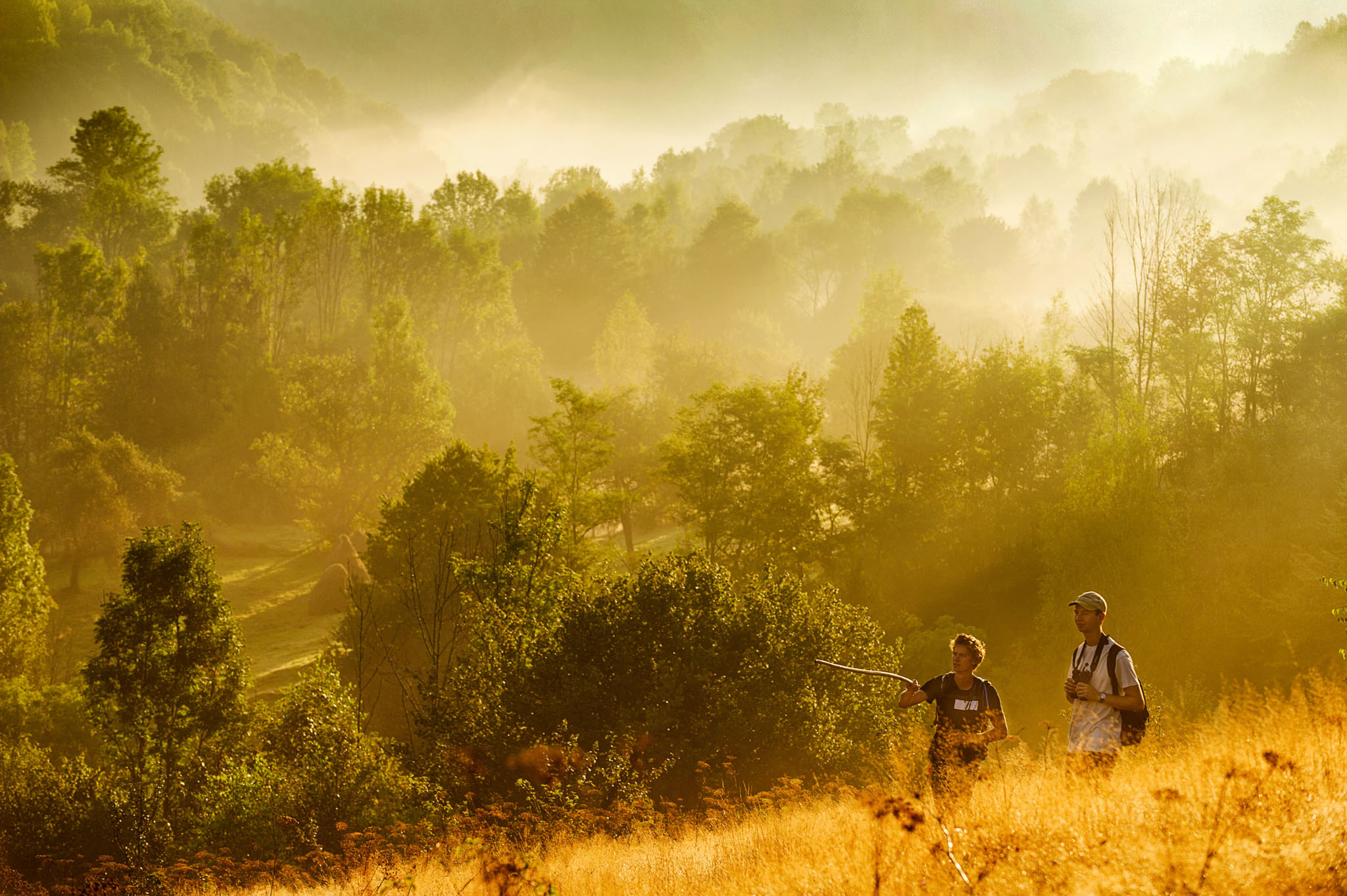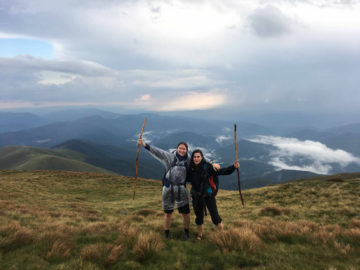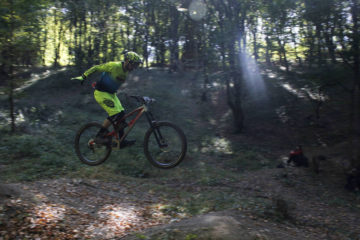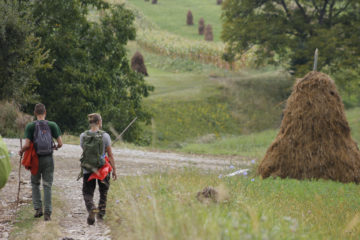This autumn, WWF Taskforce member Bianca Ștefănuț was part of a team helping to develop nature-based tourism in the Southern Carpathians rewilding area. Here she relates her memorable experience.

Thanks to the rewilding efforts of Rewilding Europe, WWF Romania and the community-focused Bison Hillock Association (AMZA), the region of the Southern Carpathians known as the Bison Hillock (part of the Southern Carpathians rewilding area) now boasts a unique blend of wild nature, culture and history. These values are now underpinning the development of local, nature-based tourism.

After an absence of 200 years, the return of European bison to the rewilding area – itself located within a beautiful Natura 2000 site – has become a launchpad for guided tracking experiences into the local wilderness. Over time, it is hoped that this will create a sustainable tourism mindset in the surrounding community.
The development of micro-tourism is giving people in the rewilding area the opportunity to offer visitors hospitality, locally grown food, and other services such as 4×4 transportation, while also generating pride in natural values and stimulating entrepreneurship.
During the autumn, members of this year’s Taskforce – a research programme for young professionals launched in 2016 with the support of the Swiss-Romanian Partnership, and now maintained annually through the WWF International Volunteering Programme – set out to identify, describe and mark hiking and bicycle trails across the Bison Hillock area.
The first step that we took was to explore the local villages and wilderness with the fresh eyes of adventurous and curious tourists. We then engaged with local people to find out more about their traditions, attractions and activities. Travelling back in time with Mr. Iacob Agăsân, a passionate, self-taught historian from the village of Armeniș, we learned about the area’s treasure trove of tales and legends, which date all the way back to the Roman Empire, through the Austro-Hungarian occupation, to the wars with the Turks in the 18th century.
We then travelled unbeaten paths and traced old Roman roads, discovering hidden landscapes and reliving the area’s tumultuous past. We admired the rich autumn colours of a rural landscape filled with fields of maize and pumpkins and orchards of apples, pears and plums, grown for the distillation of “răchie”, the local spirit.

The mayor of Armeniș welcomed with open arms the three walking and three bicycle trails we proposed as a result of this exploration process (more details of our visit to city hall can be found on the Bison Hillock blog here.) These trails connect the three villages of the Armeniș commune – Sat Bătrân, Sub Margine and Feneș – as well as scenic routes that lead more adventurous tourists all the way up into the Țarcu Mountains. They have the potential to become part of a wider European hiking trail.
Next, paths were cleared of vegetation and marked, and poles with directions and information placed at strategic points, such as crossroads, resting places or the sites of interesting local stories. In the fields and villages, hardworking locals stopped to ask us what we were doing and cheered us on.
The GPS tracks of all the bicycle and hiking trails, together with more detailed information about the region, nature and community, as well as accommodation and tours, will be soon available on the bilingual Bison Hillock website, which is currently under construction.
Through the small-scale, immersive experiences now on offer, visitors to the Bison Hillock have the chance to experience both a wild environment and the rural charm that so enchanted us. And local communities not only benefit financially from the experience of such visitors, but also through the process of imparting knowledge, stories and opinions.

Today, visitors to the Bison Hillock can look forward to hiking and biking adventures in rural and wild landscapes, the exploration of local flavours and legends, and an array of family experiences and traditional workshops.
- Read more about the reintroduction of European bison into the Southern Carpathians through the LIFE Bison project here.
- Learn more about the Southern Carpathians rewilding area here.
- Visit the Rewilding Southern Carpathians Facebook page here.
- See reintroduced bison in the Southern Carpathians through a European Safari Company experience here.
